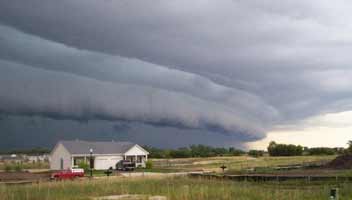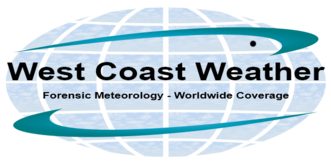 Has climate change caused an increase in severe weather events? This question is often the center of the climate change debate. One point of interest is that the increase in severe weather damage reports could be attributed to advancements in radar and increased real time weather observations.
Has climate change caused an increase in severe weather events? This question is often the center of the climate change debate. One point of interest is that the increase in severe weather damage reports could be attributed to advancements in radar and increased real time weather observations.
Types of Severe Weather Analyzed
Thunderstorms are active year around and produce a diverse range of damaging severe weather byproducts. Examples of thunderstorm severe weather byproducts are:
- Hail
- Lightning Strikes
- Flooding
Hail can cause damage to cars, aircraft, homes, livestock, and crops. The severity of the damage caused by hail is usually determined by the size of the hail. Our severe weather damage reports will detail a hail storm event.
Lightning strikes occur in two forms:
- Cloud to Cloud
- Cloud to Ground
The cloud to ground lightning can cause the most damage and is the most dangerous to humans. To create severe weather damage reports, our experts access historical radar data via the National Lightning Detection Network and use it to analyze the likelihood of lightning and potential damages that result from that lightning.
The torrential rain that is associated with thunderstorms is a big concern and often results in widespread flooding or flash flooding. The damages and insurance claims that result from this can be staggering. To better understand a flooding event our experts will produce severe weather damage reports that review weather data and also determining if this was a “100 year flood event.”
Of course there are tornados and hurricanes that are included on the list of severe weather. The extent of damages caused by tornados and hurricanes quite often covers an entire city or large regional area. The damages and associated insurance claims can be in the billions of dollars. Our team of experts has experience in weather analysis and will create severe weather damage reports to help with your investigation. Dr. Witiw was part of the Hurricane Hunters team while serving in the Air Force and this experience is invaluable in giving you the best analysis of hurricanes and tornados.
Components of Severe Weather Damage Reports
Our staff reviews the typical upper air and surface charts. However much attention is given to historical radar data and we look at all different types of radar:
- base reflectivity radar
- composite reflectivity radar
- base radial velocity radar
Dr. Witiw is a former consultant for one of the manufacturers of this type of radar equipment. He utilizes this experience and his severe weather expertise to carefully review the radar weather data that will be utilized to construct severe weather damage reports. To provide the most comprehensive reporting, we review all the archive data from NCDC, the US government Storm Predication Center, and any trusted severe weather outlook data. Finally, we also review the atmospheric soundings that are available since that gives insight into the extent of how unstable the air mass is. The severe weather damage reports are credible and comprehensive.
If you have a need for Severe Weather Damage Reports, please contact West Coast Weather »
